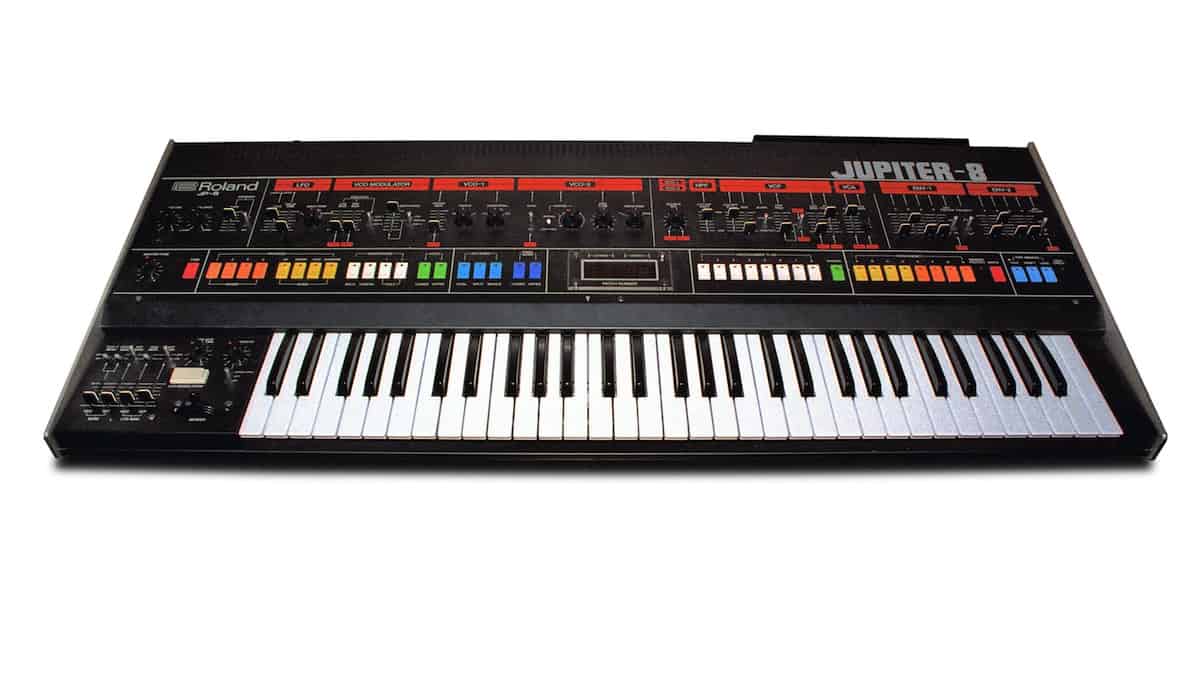Analog
HISTORICAL ARTIFACTS: The Roland Jupiter-8

When it was launched in 1981, this legendary polysynth was Roland’s flagship synthesizer.
Renowned for its lush and versatile sound, classic architecture, and easy-to-grasp layout, many consider the Jupiter-8 to be the finest synth Roland ever made. Also called the JP-8, it was so popular in the early ’80s that it sold out almost as quickly as Roland could build them. It has stood the test of time, too; almost four decades later, it remains one of the most desirable (and expensive) vintage synths you can buy—if you can find a used one for sale.
The Jupiter-8 is a visually striking instrument, with a dark gray exterior covered with brightly colored buttons and trimmed in light gray and bright orange. It’s an 8-voice analog synth with two VCOs (each with four waveforms plus noise), a lowpass VCF that switches between 2- and 4-pole operation (but doesn’t self-oscillate), a highpass filter, a single LFO with sample-and-hold, and two ADSR generators per voice. Unison mode stacks all 16 VCOs for an especially powerful sound. The internal patch memory holds 64 individual programs and 8 Patch Preset Pairs that load two split or layered patches at the same time.
It was the first synth offering both true polyphony and a split keyboard that allowed you to play four voices in the keyboard’s left half and four in the right half. You can play a bass part with your left hand and lead with your right, for example, or chords with one hand while you solo with the other. The arpeggiator can also play just one side or the entire keyboard. On the keyboard’s left is a spring-loaded lever with switches and sliders to determine how it affects pitch bend and modulation, as well as an oversized button for LFO modulation and portamento controls that let you glide between chords.
In 1982, Roland replaced the Jupiter-8 with an updated model, the Jupiter-8A.
It has more stable VCOs, a brighter display, speedier automatic tuning, and Roland’s solution to interconnecting gear in the days before MIDI, the Digital Communications Bus (DCG).
The JP-8 wasn’t the first Roland Jupiter, and it certainly wasn’t the last. The 4-voice Jupiter-4 was introduced in 1978. Five years later, the Jupiter-6 was one of the first synths with MIDI. Other
Top Photo Credit: Ed Uthman























